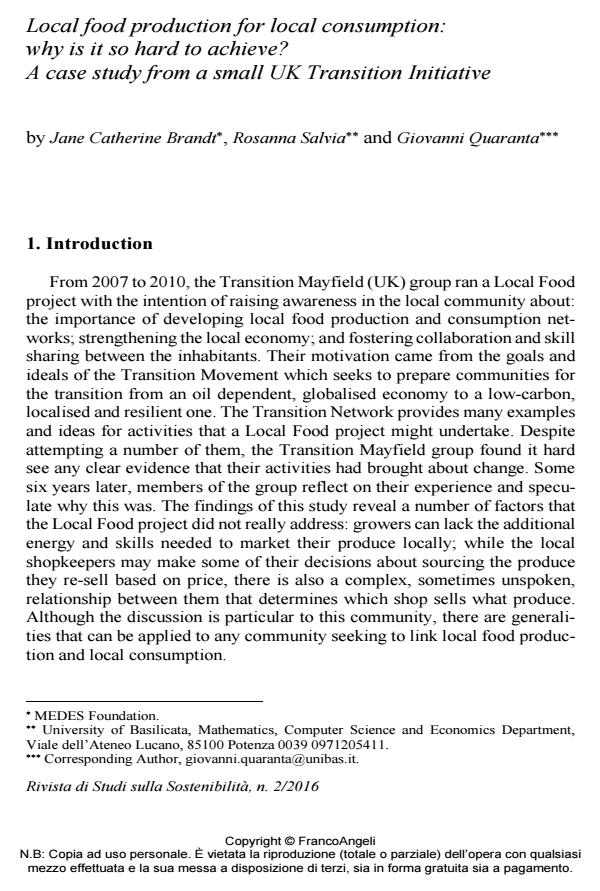Produzione e consumo di cibo locale: perché è così difficile da fare? Un caso di studio da una iniziativa di Transition group nel Regno Unito
Journal title RIVISTA DI STUDI SULLA SOSTENIBILITA'
Author/s Jane Brandt, Rosanna Salvia, Giovanni Quaranta
Publishing Year 2017 Issue 2016/2
Language English Pages 11 P. 197-207 File size 148 KB
DOI 10.3280/RISS2016-002017
DOI is like a bar code for intellectual property: to have more infomation
click here
Below, you can see the article first page
If you want to buy this article in PDF format, you can do it, following the instructions to buy download credits

FrancoAngeli is member of Publishers International Linking Association, Inc (PILA), a not-for-profit association which run the CrossRef service enabling links to and from online scholarly content.
The Transition Mayfield (UK) group ran a Local Food project to raise awareness in the local community about the importance of developing local food production and consumption networks; strengthening the local economy and fostering collaboration and skill sharing. The discussion reveals number of factors that were not addressed: growers can lack the additional energy and skills needed to market their produce locally; the community already has very active social networks and the Transition group could not add anything to it; there is a complex relationship between shopkeepers that determines which shop sells what produce. The paper shows that, when trying to promote local food production for local consumption, attention has to be paid and an understanding gained of the motivation and constraints that operate in every part of the network.
Keywords: Local food production, local food consumption, transition, community, UK, network.
Jane Brandt, Rosanna Salvia, Giovanni Quaranta, Local food production for local consumption: why is it so hard to achieve? A case study from a small UK Transition Initiative in "RIVISTA DI STUDI SULLA SOSTENIBILITA'" 2/2016, pp 197-207, DOI: 10.3280/RISS2016-002017